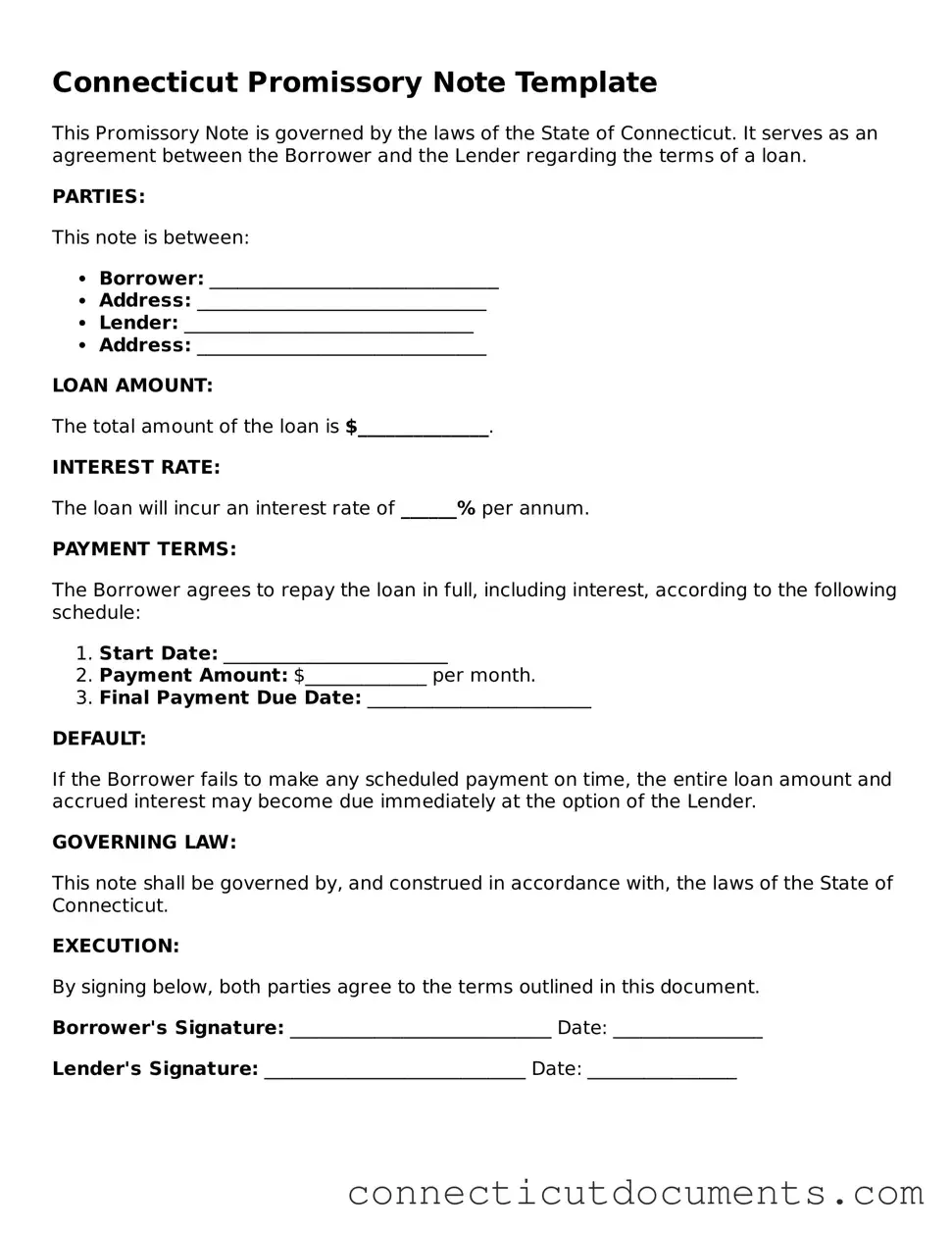The Connecticut Promissory Note is closely related to a Loan Agreement. Both documents serve as a formal record of a borrower’s obligation to repay borrowed money. A Loan Agreement, however, typically includes more detailed terms, such as interest rates, repayment schedules, and the rights of both parties in case of default. While a promissory note is often simpler and focuses primarily on the promise to pay, a Loan Agreement provides a comprehensive framework for the transaction, making it a more robust document for larger loans.
Another similar document is the Mortgage. A Mortgage is a specific type of promissory note that is secured by real property. In this case, the borrower pledges their property as collateral for the loan. If the borrower defaults, the lender has the right to foreclose on the property. While both documents involve a promise to repay, the Mortgage adds a layer of security for the lender, making it a crucial tool in real estate transactions.
Next, consider the Secured Promissory Note. This document is similar to the Connecticut Promissory Note but includes specific provisions that outline collateral backing the loan. By defining the collateral, the lender has additional protection in case the borrower fails to repay. This added security can make lenders more willing to extend credit, as they have a claim to the specified assets if necessary.
In considering the planning of your estate, creating a comprehensive Last Will and Testament is vital. This legal document ensures your assets are distributed according to your wishes, providing peace of mind. For more information, you can explore the details of creating a thorough Last Will and Testament that meets your needs.
The Unsecured Promissory Note also shares similarities with the Connecticut form. An Unsecured Promissory Note does not involve any collateral, meaning the lender relies solely on the borrower’s promise to repay. While both documents represent a loan agreement, the absence of collateral in the Unsecured Promissory Note increases the risk for the lender, often resulting in higher interest rates compared to secured notes.
A Demand Note is another document that resembles the Connecticut Promissory Note. This type of note allows the lender to request repayment at any time. Unlike a traditional promissory note, which typically has a set repayment schedule, a Demand Note provides flexibility for the lender. Borrowers should be cautious, as the lender can call for repayment without prior notice, potentially leading to financial strain.
The Installment Note is also worth mentioning. This document outlines a repayment plan that includes regular installments over a specified period. Like the Connecticut Promissory Note, it represents a borrower’s promise to repay, but the Installment Note provides a clear structure for repayment. This can help borrowers manage their finances more effectively by breaking the total amount into manageable payments.
The Convertible Note is another related document, often used in startup financing. This note allows the lender to convert the debt into equity in the company at a later date. While it shares the basic premise of a promissory note, the Convertible Note adds an investment component, appealing to lenders who are interested in potential equity ownership in addition to repayment.
Next, there is the Personal Guarantee. While not a note in itself, a Personal Guarantee is often associated with promissory notes, especially in business loans. This document involves a third party—usually a business owner—who agrees to repay the loan if the business defaults. This additional layer of security can make lenders more comfortable extending credit, as it decreases their risk.
Lastly, the Business Loan Agreement bears resemblance to the Connecticut Promissory Note. This document encompasses a range of terms and conditions related to a business loan, including repayment terms, interest rates, and covenants. While a promissory note is a straightforward promise to repay, a Business Loan Agreement provides a more detailed understanding of the obligations and rights of both the lender and borrower, making it essential for larger or more complex transactions.
